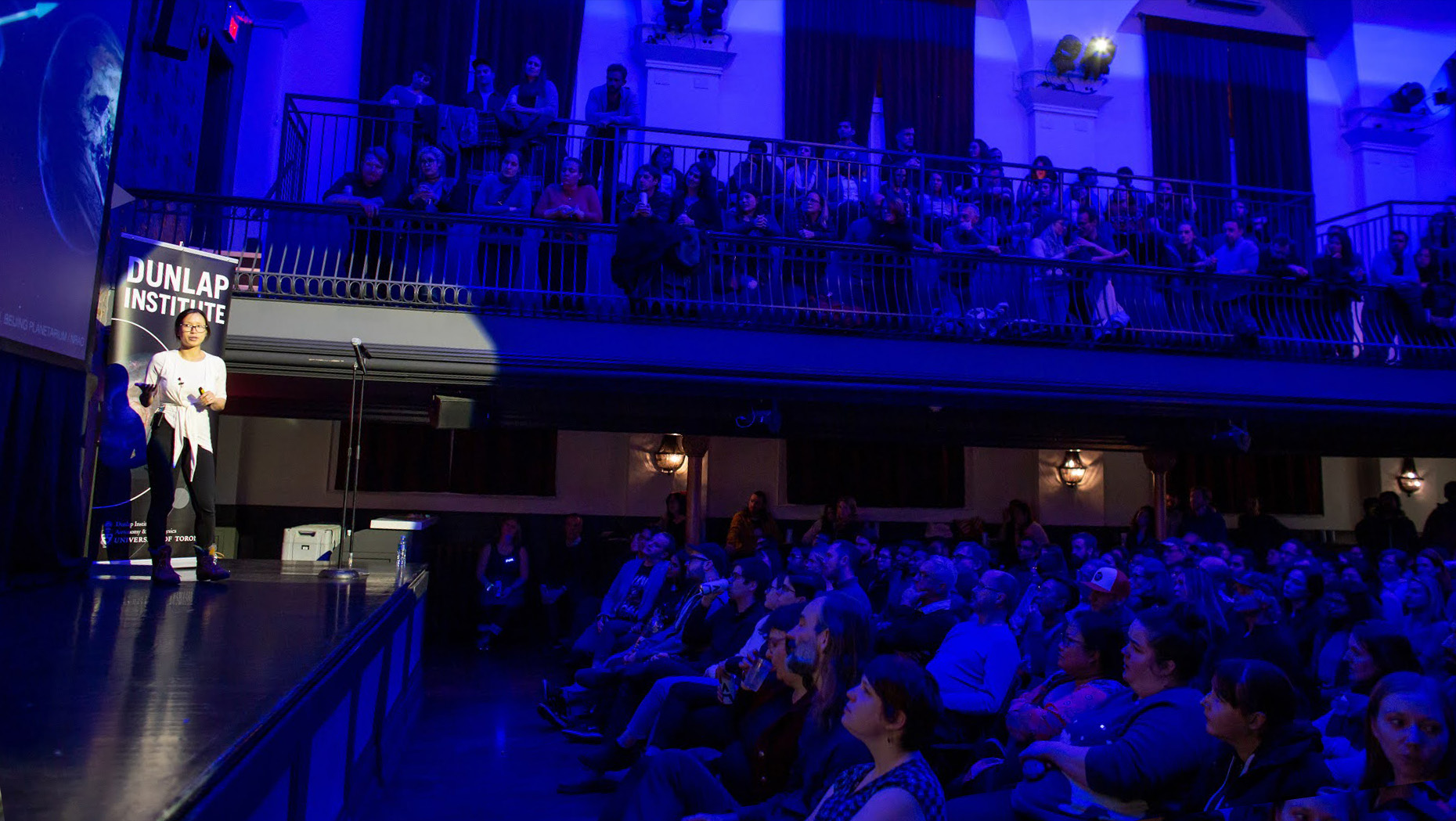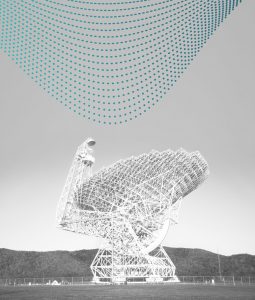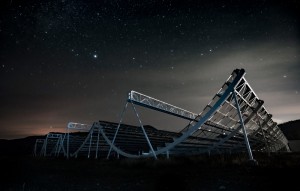
An international collaboration of over 170 scientists published the first evidence for the presence of low-frequency gravitational waves humming throughout our universe—including one recent member of the Dunlap Institute.
Dr. Cherry Ng came to the Dunlap Institute in 2017 as a SOSCIP TalentEdge Fellow and Research Associate. A couple years earlier, Ng joined the North American Nanohertz Observatory for Gravitational Waves (NANOGrav), the consortium that published the new data.
“This kind of project requires a big collaboration where everyone works together towards the same goals,” she says. “It is inspirational to see that the patience invested in the rigorous analyses has paid off.”
How they did it

The 100-meter Green Bank Telescope, the world’s largest fully steerable telescope and a core instrument for the pulsar timing array. Credit: NANOGrav
While brief high-frequency gravitational waves can be detected by ground-based instruments, the continuous low-frequency waves needed something much larger to be found—larger than Earth itself. Thinking far beyond our planet, scientists used 68 exotic stars known as “pulsars” in our galaxy to create an enormous gravitational wave detector called a “pulsar timing array.”
A pulsar is what’s left of a massive star’s core after a supernova explosion. As pulsars spin, they push radio waves out through space that appear to “pulse” when seen from telescopes on Earth. These pulses are very stable, making them useful as a kind of cosmic clock. Ng collected pulsar data with the Green Bank and Arecibo telescopes in West Virginia and Puerto Rico and analyzed the timing of these pulses.
Gravitational waves affect the timing of each pulse. Einstein’s theory of general relativity, which says that gravity is the result of matter and energy warping the fabric of space and time, predicts how these waves delay some pulses while speeding-up others.
NANOGrav scientists detected gravitational waves, consistent with Einstein’s theory, with oscillations over years to decades using 15 years of data collected through the pulsar timing array. Scientists have good reason to believe that the gravitational waves are created by thousands of pairs of supermassive black holes orbiting each other and slowly merging at the center of ancient galaxies—but the theory has yet to be proven.
What’s next
At the Dunlap Institute, Ng focused on commissioning the Canadian Hydrogen Intensity Mapping Experiment (CHIME). Completed in 2017 by a team of Canadian cosmologists, including the Dunlap Institute’s Professor Keith Vanderlinde, CHIME broke new ground by mapping the 21-cm signature of neutral hydrogen across the largest volume of space ever surveyed. It sits at the Dominion Radio Astrophysical Observatory in Penticton, B.C.
Ng is currently working to help provide daily pulsar data from CHIME to the NANOGrav project to further enhance its sensitivity. While CHIME data was not included in the most recent research out of NANOGrav, she predicts that it will be included in the next data release.
With greater sensitivity, Ng believes it might be possible to find a black hole binary merger—the phenomenon in which two orbiting black holes merge and release a massive amount of gravitational waves. That finding would help us better understand how galaxies form and the cosmic history of our own.
Learn more
Ng is currently a permanent astronomer of the Centre National de la Recherche Scientifique (CNRS) in France, under the Laboratoire de Physique et Chimie de l’Environnement et de l’Espace (LPC2E).
Visit Cherry Ng’s website to learn more about her work.

